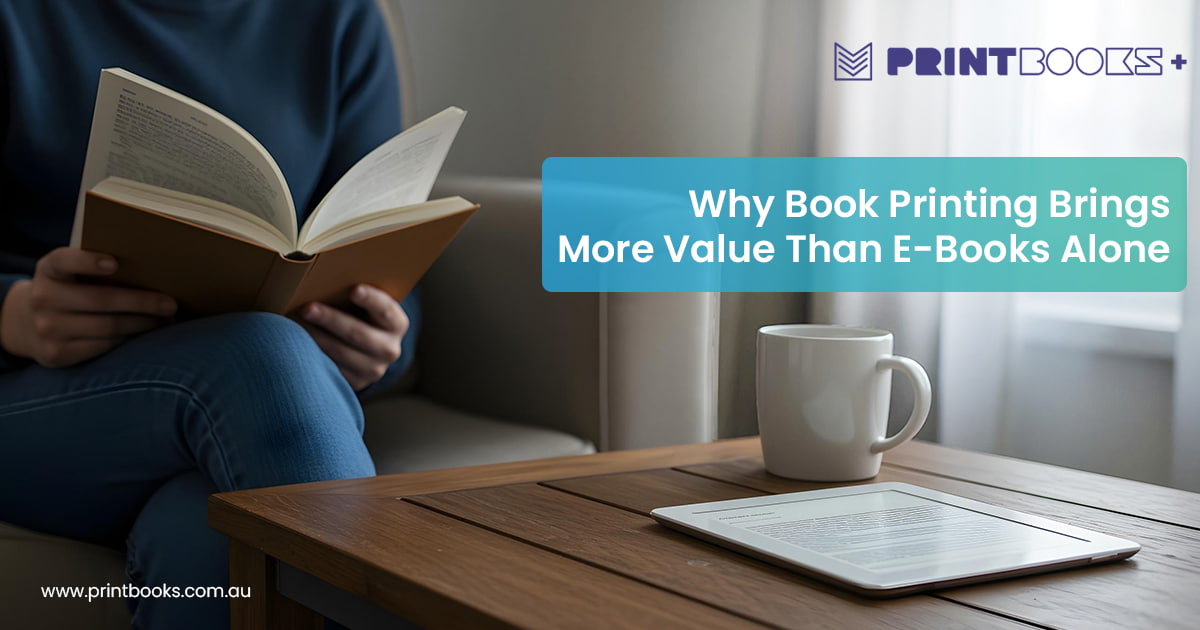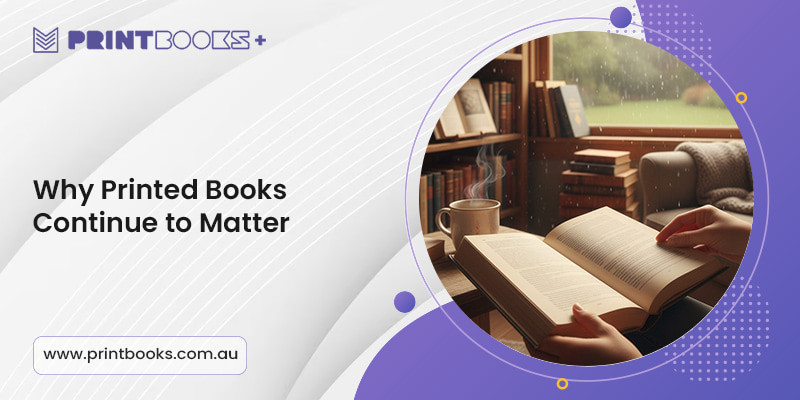Why Book Printing Brings More Value Than E-Books Alone

Have you ever downloaded an e-book with the intention of reading it and then only to forget about it after a week, buried in a folder on your device?
This is one of the biggest drawbacks of digital formats. Convenience often comes at the cost of lasting impact. We all know that E-books are portable, instant and easy to share but they lack the sensory and emotional connection that comes with holding a printed book in your hands.
Studies have shown that people retain information better when reading print compared to screens and printed books are more likely to be revisited, gifted or displayed, giving them a life far beyond the initial read.
Whether it is for authors seeking recognition, businesses building brand value or readers craving a more immersive experience, print brings depth and tangibility that e-books alone cannot deliver.
So, in a world that seems to be going all-digital, why do printed books still stand tall as a more valuable medium and what makes them so hard to replace?
Why Printed Books Continue to Matter

Before understanding the advantages of printed books, it is essential to understand why physical books continue to occupy a valued place in the lives of readers worldwide.
Unlike digital formats, printed books offer a distinctive blend of sensory engagement, emotional resonance and intellectual stimulation.
They provide a reading experience that is immersive, personal and enduring, rendering them far more than mere vessels of information. From the subtle satisfaction of turning a page to the pride of owning a carefully designed edition, printed books deliver an experience that digital screens cannot replicate.
The Tangible Experience of Printed Books
Printed books engage multiple senses simultaneously, making reading more immersive:
- The texture of the pages and the weight of the book create a tactile connection.
- The faint aroma of ink and paper evokes familiarity and comfort.
Research from the Norwegian University of Science and Technology shows that students retain information better and score higher on comprehension tests when reading print rather than digital material.
Holding a book allows readers to slow down, reflect, and absorb material more fully, enhancing both engagement and retention.
Longevity and Collectibility
Printed books are durable and can last for decades, often becoming treasured family heirlooms or collectibles. First editions, signed copies and limited prints frequently increase in value over time.
A first edition of Harry Potter and the Philosopher’s Stone sold for over $100,000 at auction, highlighting the enduring cultural and financial significance of print. Unlike e-books, printed books remain accessible regardless of technological changes, ensuring lasting relevance.
Enhanced Focus and Reduced Digital Fatigue
Reading on digital devices exposes readers to constant distractions, including notifications, apps, and social media. Printed books provide an uninterrupted environment, allowing sustained focus and deeper comprehension.
Printed books promote longer attention spans and less fatigue, making them ideal for students, professionals, and serious readers.
Emotional and Gift Value
Printed books carry emotional and symbolic significance that e-books cannot replicate. They serve as:
- Meaningful gifts
- Home decor
- Tangible expressions of knowledge or achievement
Personalized editions or beautifully designed novels create memorable experiences that endure. Gifting a printed book demonstrates thoughtfulness and care, offering a personal touch that a digital file cannot match.
Improved Learning and Memory Retention
Printed books enhance comprehension and memory retention through physical interaction:
- Flipping pages and highlighting passages helps create mental maps of the content.
- Handwritten notes improve recall and understanding.
- Students who engage with printed texts outperform digital readers in tasks requiring critical thinking and detailed comprehension.
Printed books are particularly valuable in academic and professional contexts where deep learning is essential.
Cultural and Aesthetic Value
Printed books contribute to both culture and visual appeal:
- Cover design, typography, and illustrations make books objects of beauty and craftsmanship.
- Libraries, personal bookshelves, and bookstores act as cultural spaces that celebrate knowledge and creativity.
- Limited edition prints, illustrated novels and rare collections often become prized possessions for collectors, blending literature with visual artistry in a way digital formats cannot.
Integrating Print and Digital Formats
Combining print and digital formats allows readers to enjoy the benefits of both worlds. E-books provide portability, instant access, and searchable content, while printed books offer tactile engagement, emotional satisfaction and durability.
Many publishers now release both print and digital editions, which allow readers to enjoy the convenience of digital formats without sacrificing the sensory and intellectual benefits of print.
